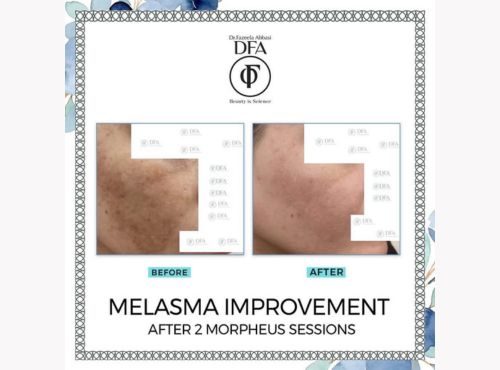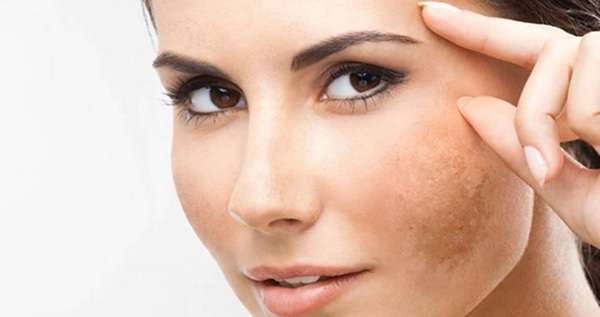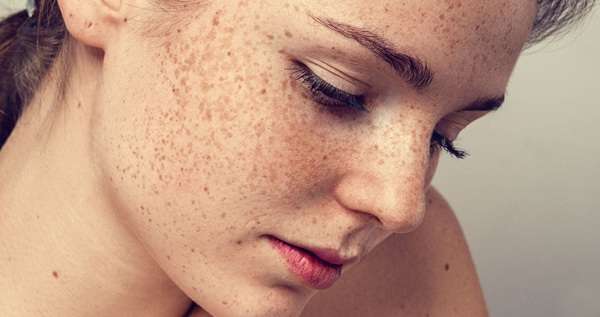Best Melasma Treatment in Islamabad by Dr. Fazeela Abbasi
What is Melasma and What Does it Look Like?
Melasma word means “black spot” which creates symptoms of light brown, dark brown or gray patches on your skin. They mainly appear as freckle-like spots if you are experiencing melasma. They may appear on several areas of your face such as cheeks, lips and forehead.

The common people who experience melasma are the ones who are pregnant that is why it is also called a mask of pregnancy. However, it doesn’t cause serious or harm to the health of individuals but it leaves people self-conscious as they start to doubt their appearance.
Signs to have Melasma
Melasma can appear on the six areas of your body. If you start to observe any signs of freckles or patches (Red or Inflamed), you may have just started to experience melasma. The six major areas of melasma are as follows.
- Brachial: Your upper arms or shoulders.
- Malar: Cheeks and nose.
- Lateral Cheek Pattern: Your both cheeks.
- Neck: All sides of your neck.
- Centro Facial: Cheeks, nose, upper lip.
- Mandibular: Your jawline
What Causes Melasma?
Melasma can be caused due to your excessive exposure in heat, ultraviolet or visible light. It can also be caused due to the hormonal changes in your body. Other than that, melasma can be caused due to other possible factors which include:
- Birth Control
- Estrogen/ Diethylstilbestrol
- Genetics
- Anti-Seizure Medications
- LED Screens
- Hypothyroidism
- Pregnancy
- Soaps
- Tanning Beds
- Phototoxic Drugs
- Makeup
- Skin Care Products
Where Does Melasma Most Commonly Occur?
The common areas where melasma can occur are as follows:
- Both Cheeks
- Upper Shoulders
- Jawline
- Forehead
- Neck
- Nose and Upper Lip
How Do Dermatologists Diagnose Melasma?
Your healthcare provider will start to diagnose your melasma by looking into your affected areas. Your dermatologist will use special equipment like wood lamps or a dermatoscope to see how deeply the dark pigments have reached into the layers of your skin.
Melasma may seem to look like other skin conditions. In order to verify melasma your dermatologist will perform skin biopsy before the start of your treatment.
How is Melasma Treatment Done?
Melasma can go away itself by taking proper medications but sometimes there are cases that melasma doesn’t go away and it may exist forever. It’s a harmless condition but some individuals want to treat it due to the lack of a better appearance.
In order to treat your dermatologist will create a treatment plan based on your requirements. To achieve the best treatment for melasma your healthcare provider will suggest you following guidelines.
Sun Protection
Use sun protection to avoid heat exposures. Sun screens which contain zinc oxides, titanium dioxide and iron oxide are preferred for melasma conditions.
Medications and Procedures
Your healthcare provider will suggest you follow procedures and medications your skin pigmentation treatment.
- Triple combination creams.
- Medicines containing Azelaic acid or Vitamin C.
- Tretinoin and corticosteroids.
Pixel CO2 Laser Treatment for Melasma
CO2 lasers is one of the best treatments for melasma on face, using a mix of gasses to create a laser beam. The best treatment for melasma on face involves delivering laser energy in a pattern of small dots on the skin, promoting skin healing and rejuvenation. Dr. Fazeela Abbasi uses this technology for Melasma on face treatment.
Melasma is a pigmentation issue that develops on the face, typically seen in individuals with darker skin tones but can also affect those with lighter skin. It’s more common in women, particularly among younger and middle-aged individuals.
Are there Complications / Side Effects of the Melasma Treatment?
After use of medications such as hydroquinone or Azelaic lotions can cause dermatitis.
Procedures like CO2 laser treatment for melasma will remove your pigments permanently but you may have hypertrophic scars and hyperpigmentation after your skin pigmentation treatment.
It is necessary to keep your healthcare provider informed about your post treatment conditions. In case of any serious complications visit your dermatologist as soon as possible.
Types for Melasma on Face Treatment in Pakistan
Depending on how deep the melanin is, there are four different forms of melasma: Using a dark light, as Wood uses.
- Dermal Melasma: Melanin deposits in the dermis (dermal melasma) are superficial. It often appears around the zygomatic bone, and its edges are generally somewhat blurry. A wood-lit bluish-black hue.
- Epidermal Melasma: Melasma of the epidermis occurs when melanin accumulates in the skin’s deepest layers. It often appears in the face’s middle region and is bounded by clear lines. Dark brown melasma is the most amenable to treatment with wood light.
- Mixed Melasma: Melasma that has both dermal and epidermal components is called mixed melasma.
- Physiological Melasma of the Pregnant Woman: Pregnancy-related melasma on the body: It’s short-lived and treatable, so don’t worry.
Consultation
If you or someone you know is dealing with melasma, take action today. Start by consulting at DFA for personalized treatment options and advice on sun protection. Remember, melasma can be managed with proper care, so don’t hesitate to seek professional help and take control of your skin’s health.
FAQs
No, it is a rare case that the melasma may not go away.
No, It is a harmless skin condition.
No, melasma is not painful at all.
Yes, it can be prevented by avoiding sun exposure and using sunscreen.
Melasma can be treated with various topical creams, chemical peels, and laser therapy.
People who have dark skin tones are at the most risk from melasma.
No, it develops gradually over time.
It takes several weeks to months based on your skin condition.
Sunscreens containing zinc oxides or titanium dioxide are most suggested for melasma.
Yes, certain foods like eggs can trigger melasma.
It can cover your melasma but does not cure your skin.
Due to hormonal changes in pregnancy, melasma can start to flare up.
When it comes to melasma on face treatment and poikiloderma, Civatte treatment typically requires between 4 and 6 sessions, with each session spaced out at an average of every 4 weeks. When treating freckles (freckles) or solar lentigines (age spots), between one and three sessions are required, with a typical gap of 4 weeks in between each skin pigmentation treatment.
It is important to use consistent photoprotection products throughout the whole year of the calendar in order to avoid the reappearance of pigmentary lesions and to preserve the results that were achieved via laser interventions. In addition, this will help sustain the outcomes that were achieved during the CO2 laser treatment for melasma.
Immediately After Treatment: It is red but makeup can be applied. It can cause slight burning, which disappears after a few minutes.
The Day After the Treatment: Slightly brown, but makeup can be applied. 3-4 days after the treatment skin flakes off and starts getting back to normal.
To ensure your best treatment for melasma on face, moisturize with prescribed moisturizers to speed up the healing of the skin. Strong sun exposure and acne products should be avoided. Avoid peeling off the skin, and allow the skin to flake off on its own.
Red light emitting diode therapy immediately after laser and daily after treatment for a few days speeds up skin healing, giving it a more polished and glowing appearance.


